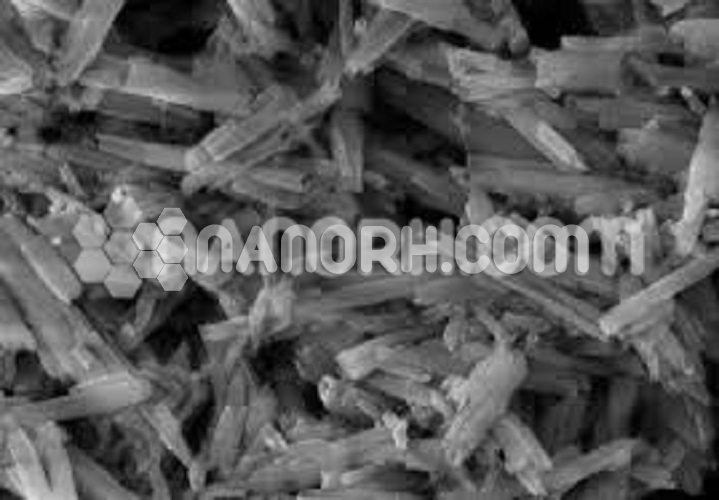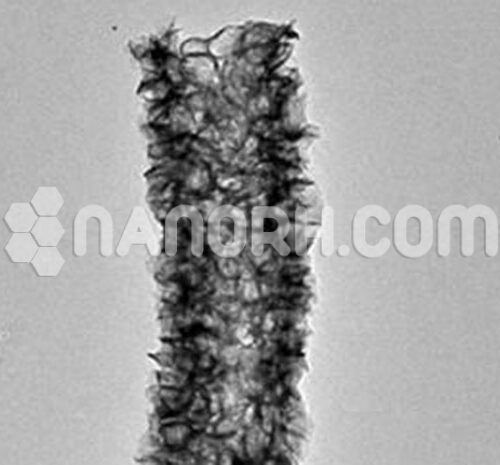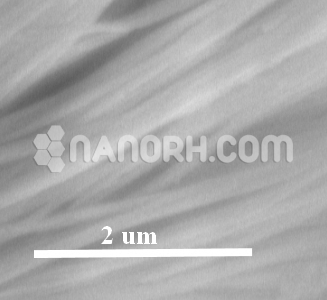Germanium Nanowires
Germanium Nanowires are generally immediately available in most volumes, including bulk quantities.Elements can produce most materials in high purity and ultra high purity (up to 99.99999%) forms and follows applicable ASTM testing standards; a range of grades are available including Mil Spec , ACS, Reagent and Technical Grade, Food.
| Germanium Nanowires | |
| Product No | NRE-13003 |
| CAS No. | 7440-56-4 |
| Formula | Ge |
| Average diameter | 30-50nm |
| Average Length | up to 500nm |
| Purity | 99.9% |
| Molecular Weight | 72.61 g/mol |
| Density | 5.323 g/cm3 |
| Melting Point | 937.4 °C |
| Boiling Point | 2833 °C |
Germanium Nanowires are generally immediately available in most volumes, including bulk quantities. Elements can produce most materials in high purity and ultra-high purity (up to 99.99999%) forms and follows applicable ASTM testing standards; a range of grades are available including Mil Spec, ACS, Reagent and Technical Grade, Food.
Applications Nanoelectronics:
Field-Effect Transistors (FETs): Germanium nanowires are studied as an alternative to silicon for field-effect transistors (FETs), which are the building blocks of modern electronics. The high electron mobility of germanium allows for faster transistor switching and better performance at smaller scales. Ge nanowires can be integrated into FinFETs and other advanced transistor architectures to enhance performance in next-generation computing systems.
Advanced Integrated Circuits: Germanium-based circuits are being explored for high-performance processors and memory devices, where they can provide improved power efficiency, higher speed, and better thermal management compared to traditional silicon-based circuits.
Complementary Metal-Oxide-Semiconductor (CMOS) Technology: Ge nanowires are used as part of the CMOS process to improve the performance of both p-type and n-type transistors, thanks to their high charge carrier mobility and low power consumption.
Optoelectronics:
Photodetectors: Germanium nanowires exhibit a direct bandgap in their nanostructured form, making them useful in photodetectors that can operate in the infrared and mid-infrared ranges. They are being explored for use in applications such as fiber-optic communications, remote sensing, and night vision devices.
Light Emitting Diodes (LEDs): Thanks to the quantum confinement effects in germanium nanowires, they can be used in the development of Ge-based light-emitting diodes (LEDs) for on-chip photonic circuits or optical interconnects. These LEDs can potentially reduce energy consumption and increase the speed of data transmission in photonic devices.
Lasers: Germanium nanowires, particularly those with a size in the quantum-dominated regime, can also be engineered to serve as active materials for nanolasers used in applications such as data storage and high-speed optical communications.
Energy Storage:
Lithium-Ion Batteries: Germanium nanowires are being investigated as anode materials in lithium-ion batteries due to their high charge capacity and ability to absorb a large number of lithium ions during charge and discharge cycles. Ge nanowires offer improved cycling stability compared to silicon-based anodes, making them a promising alternative for next-generation battery technologies.
Supercapacitors: Germanium nanowires are also being studied for use in supercapacitors as high-surface-area materials that improve energy storage and rapid charge/discharge capabilities. Their high conductivity and ability to store charge efficiently make them suitable for energy storage systems that require fast power delivery.




